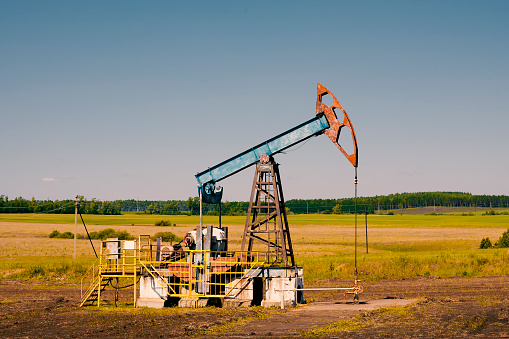There are four different types of economies. These are the Command, Transition, Traditional, and Mixed economies. Each has a specific set of characteristics that makes it unique. These types of economies are characterized by different kinds of rules and institutions that help them work. Understanding what each type means is helpful for understanding how your own community operates.
Mixed economy
A mixed economy is a form of economic system in which elements of a market economy and a planned economy are combined. In other words, it combines free markets with elements of socialism. This type of system is characterized by its mixture of private and public enterprises. However, it is not the only type of economy.
A mixed economy allows citizens to choose which occupations and businesses they want to pursue. Because prices are determined by supply and demand, the government has limited power over the markets. However, the government can step in to reduce price surges or mitigate product shortages. This type of economy maintains the profit incentive of a capitalist economy while maintaining the protection of public interest by limiting the concentration of wealth in a small number of people or corporations.
Mixed economies also have benefits and drawbacks. In an open economy, the government can intervene if there is excessive wealth concentration or other harmful practices. Moreover, the government has the power to enforce regulations governing prices of goods and services. This allows the government to protect the interests of the working class and prevent exploitation. Public regulations prevent too much concentration of assets, which would lead to monopolies. In addition, a mixed economy also allows the government to intervene in welfare programs.
In today’s world, most nations follow a mixed economy model. Some have a more market-based economy while others favor the socialist model. Typically, in the west, mixed economies are more prevalent. While the United Kingdom has a very free-market economy and strong property rights, the US still has high levels of government intervention.
A mixed economy includes three major sectors: the public sector, the private sector, and the cooperative sector. The public sector and the cooperative sector are a mixture of public and private enterprises. These sectors work together to produce goods and services. The government also controls some sectors of the economy to avoid monopolization and discrimination.
Mixed economies often have problems with corruption and nepotism. The private sector is less free in these economies, and government regulation may hinder the growth of private sector industries.
Transition economy
A transition economy is an economy that is changing from a centrally planned economy to one that is more market-based. It is characterized by structural transformations that aim to establish market-based institutions. These economies often experience difficulties in the process, and it is important to understand the factors that contribute to successful transition. This article discusses some of these issues. It also gives a general overview of the transition economy. Here, you’ll learn more about the different types of transition economies and how to spot them.
Transition economies have often experienced deep and prolonged recessions. These economies have had difficulty recovering from their crises. When they first came into existence, they were significantly poorer than their free-market counterparts. To begin with, these economies were characterized by weak demand for their products. In addition, their real GDP was much lower than the levels recorded in 1989. Only Poland, the Slovak Republic, and Slovenia reached or exceeded 1989 output levels in 1995. Most of the former Soviet Union countries had real output that was about 55 percent lower than the levels in 1989.
During the 1990s, many transition economies saw increasing unemployment rates. Part of this was due to global recession. However, after reforms were implemented, unemployment rates in these countries decreased. In addition, many of these countries experienced price inflation during this period. As newly privatized firms began to charge their true costs, some entrepreneurs took advantage of this situation and inflated their prices.
The economic transition process also led to an increase in inequality. While some people benefited from positions in the entrepreneurial sector and benefited from low wages, others suffered from the rising costs and unemployment. The result was a rapidly widening gap between rich and poor. In a transition economy, the state acted as an enabler and not a driver.
Transition policies are complicated. The Soviet past is often an important factor in the process of transition. The socialist legacy of transition economies cannot be fully understood without considering their socialist past. It is relevant in many aspects of the process, but most importantly, in the transformation of institutional infrastructure.
Traditional economy
A traditional economy is a system of economics based on time-honored beliefs and customs. These traditions shape how goods and services are produced and distributed. It also allows a community to maintain its own cultural identity and history. Those traditions are often quite strong, but they also can be fragile.
Traditional economies differ from modern ones in that they focus on the behavior of individuals rather than the market. These economies don’t use standard currencies, but instead use barter systems to exchange goods and services. The primary factors that shape these economies include culture and family ties. These economies are not based on the profit motive, and therefore are not affected by global trends.
People living in traditional economies hunt animals and produce food for their families. They also grow grain, make clothes, and build shelter. In addition, they barter, which is an exchange of goods without money. This is still an important practice for many cultures, including the Amazon tribes and Australian Aborigines. The traditional economy relies heavily on cultural traditions and is more ecologically sustainable than modern economies.
The Inuit tribe uses a traditional economy. The Inuit teach their children the same customs and resources they have used for centuries. Children are taught how to hunt and fish and to use tools to build shelter. They also create money to facilitate trade over long distances. Traditional economies are thriving in underdeveloped countries.
Traditional economies are more sustainable than modern ones, and they produce almost no pollution. However, they tend to be less efficient than market economies, and they may not provide consistently good living conditions. If the environment is affected by natural disasters, traditional economies may not be sustainable. This is because traditional economies depend heavily on the environment, which may affect their crops and decrease their productivity.
The traditional economy is the most basic type of economy. It relies on community and historical practices to allocate scarce resources. It is an economy that focuses on agricultural, hunting, and social activities.
Command economy
A command economy is a system that gives the government total control of an economy, so that people are forced to do what the government wants. Because these economies are not based on consumer demand, they often create a “shadow economy” that produces goods and services without a price tag. These “shadow economies” create money flows and illegal wealth, and weaken the entire economic system.
In a command economy, the government determines what products should be produced, what services should be offered, and what prices should be set. Individual businesses may also exist, but their production depends on the direction of the state. For instance, a steel mill might be ordered to produce 500,000 tons of steel per year. Similarly, a baker might be ordered to produce 500,000 loaves of bread.
A command economy can also promote the proliferation of illegal activities. In such an economy, black marketing and monopoly become common. Furthermore, a command economy is unable to meet the consumption patterns of the population through regulation. Therefore, it is difficult to ensure that people can meet their needs. This lack of competition creates a system of rationing.
A command economy is also marked by a lack of individual freedom. In these systems, the government determines what should be produced, and the people are not allowed to have an opinion. Freedom of speech is severely restricted and the government uses propaganda to persuade the citizens that their country is economically successful. Because the government controls all of the sources of production, it controls the amount of goods that are produced and the wages of the workers.
The central authority in a command economy is not motivated by profits and therefore, the economy lacks the necessary competition that enables it to grow. Instead, it is motivated by political interests and the desire to please party bosses. As a result, corruption is a constant problem. Therefore, it is important to understand the differences between a command economy and a free market economy.
Command economies are mixed with capitalism in recent years. Having a mix of economic systems is beneficial for the economy. In a command economy, the government plans and manages the economy over a five-year period. The government monitors the progress of the economy through budget planning and management.



